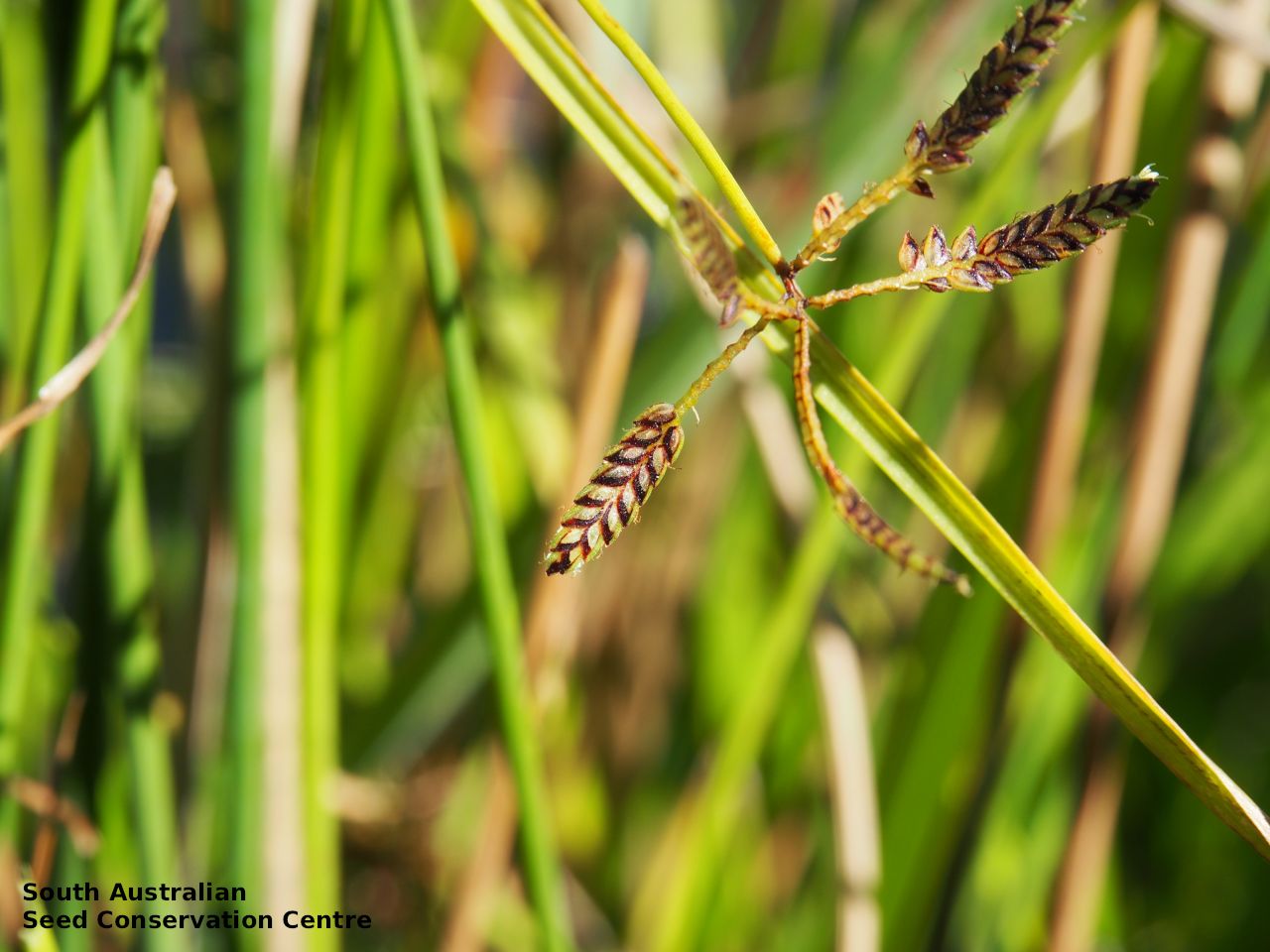


















Botanical art
Prior names
Cyperus eragrostis var. pauperata
Etymology
Cyperus from the Latin 'cyperos', derived from the Greek 'kypeiros', an ancient Greek name used by Homer and Theophrastus for several plants of this genus. Sanguinolentus from the Latin 'sanguis' meaning blood and 'olentus' meaning abounding in, possible referring to the reddish brown colour of the inflorescence.
Distribution and status
Found in the southern Flinders Ranges and southern Mount Lofty Ranges in South Australia growing in wet areas around swamps and on stream-banks. Also found in Queensland, New South Wales, Victoria and Tasmania. Native. Are in South Australia. Uncommon in Tasmania. Common in the other States.
Herbarium regions: Flinders Ranges, Murray, Southern Lofty
NRM regions: Adelaide and Mount Lofty Ranges, South Australian Arid Lands, South Australian Murray-Darling Basin
AVH map: SA distribution map (external link)
Plant description
Annual sedge to 40 cm high, sometimes dwarfed to 2-3 cm high. Stems solitary or tufted, ascending to erect, almost setaceous in small plants, coarser in others; triquetrous, striate, smooth. Leaves grass-like, variable, to 3 mm wide; shorter than the stems. Bracts 3 or 4, spreading; at least the lower longer to much longer than the inflorescence. Inflorescence capitate or umbellate; rays few, short to 4 cm long. Spikelets clustered, mostly dark, oblong or oblong-lanceolate, to 14 mm long and 2 mm wide with 8-20-flowers, strongly flattened. Flowering between November and April. Fruits are flat reddish-brown globular fruit-head. Seeds are dark brown to black ovoid seed to 1.3 mm long and 0.8 mm wide, with small-pitted surface. Seed embryo type is capitate.
Seed collection and propagation
Collect seeds between January and June. Collect fruits either by picking off the mature heads, those turning reddish brown and come-off easily. A total of 14,000 seeds were collected and banked for a population at Mount Compass in 2017, with the support of Natural Resources Adelaide & Mount Lofty Ranges. Place the heads in a tray and leave to dry for one to two weeks. Then rub the heads with a rubber bung to dislodge the seeds. Use a sieve to separate any unwanted material. Be careful, as the seeds are very small. Seeds are yellowish ovoid and hard. Store the seeds with a desiccant such as dried silica beads or dry rice, in an air tight container in a cool and dry place. From two collections, the seed viability was average to high, ranging from 70% to 80%
| Location | No. of seeds (weight grams) | Number of plants | Date collected | Collection number Collection location | Date stored | % Viability | Storage temperature |
|---|---|---|---|---|---|---|---|
| BGA MSB | 9,800 (1.73 g) 8,500 (1.5 g) | 3-Jan-2007 | RJB70977 Northern Lofty | 1-Aug-2007 | 70% | +5°C, -18°C | |
| BGA | 3,700 (0.67 g) | 30 | 12-Mar-2010 | DJD1810 Southern Lofty | 1-Jun-2010 | 80% | -18°C |
| BGA | 14,000 (5.5 g) | 100+ | 8-Mar-2017 | DJD3641 Southern Lofty | 1-Nov-2017 | 80% | +5°C, -18°C, -80°C |
| BGA | 45,200 (6.81 g) | 140 | 1-Apr-2016 | KHB889 Southern Lofty | 30-Jun-2018 | 60% | -18°C, -80°C |
Number of plants: This is the number of plants from which the seeds were collected.
Collection location: The Herbarium of South Australia's region name.
% Viability: Percentage of filled healthy seeds determined by a cut test or x-ray.